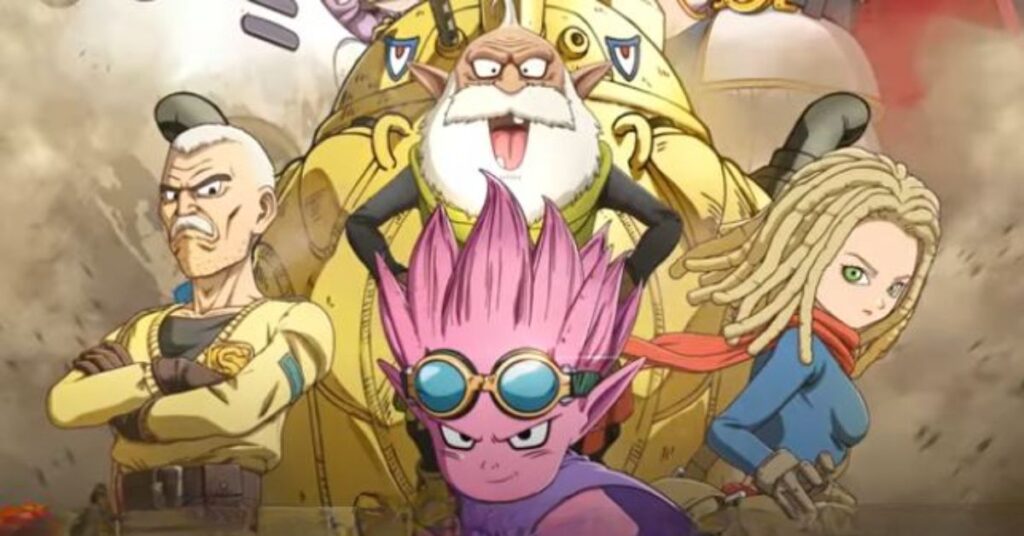Introduction to Sand Land Tactical Card Battle
Welcome to the thrilling world of Sand Land Tactical Card Battle! This captivating card game brings to life the desert landscapes and characters from Akira Toriyama’s Sand Land manga, immersing players in a tactical struggle for precious water resources. The game blends strategic gameplay with intense skirmishes, offering a unique experience for both card game enthusiasts and fans of the Sand Land universe. Whether you’re new to the game or a seasoned player, mastering the intricacies of this battle will give you a competitive edge and enhance your enjoyment.
Understanding the Game Structure
Before diving into the details of the gameplay, it’s important to understand the structure of the Sand Land Tactical Card Battle. This game is designed for two players, each aiming to outmaneuver their opponent through a series of strategic moves and resource management. The primary goal is to control water resources, a vital commodity in the desert setting of Sand Land. Players must carefully build and manage their decks, using a combination of leader cards, asset cards, and tactic cards to dominate the battlefield.
Game Format and Deck Composition
The Sand Land Tactical Card Battle is sold in a constructed set format, meaning each product comes with a predetermined set of cards. This format ensures that all players start on an equal footing, focusing the game on strategy rather than luck.
- Deck Composition: Each player’s deck consists of:
- One leader card: The central figure of your strategy.
- 30 asset cards: This includes both units, which are your fighting forces, and locations, which provide strategic advantages.
- Tactic cards: These are powerful tools that can change the course of a game through immediate effects or ongoing benefits.
Understanding these different card types and how they interact is crucial for developing effective strategies.
Leader Cards
Leader cards are the backbone of your deck, providing essential support during battles. Each player can only have one leader card, making its selection a critical decision. Leader cards often possess special abilities that can significantly influence the game, such as boosting the strength of your units or providing additional resources. Selecting the right leader card that complements your overall deck strategy is essential for victory.
- Role of Leader Cards: Beyond their abilities, leader cards can also contribute to your deck’s theme or strategy. For instance, some leaders might excel in offensive tactics, while others might provide defensive support or resource generation.
Asset Cards
Asset cards form the bulk of your deck and are divided into two subtypes:
- Units: These cards represent characters and creatures that you deploy on the battlefield. Each unit card has attack and defense values, along with special abilities that can be activated during the game.
- Locations: These cards affect the battlefield by providing various advantages, such as boosting the power of your units or hindering your opponent’s strategies. Proper placement and timing are key to maximizing the effectiveness of location cards.
Tactic Cards
Tactic cards are versatile and can be the difference between victory and defeat. They offer a wide range of effects, from immediate boosts to your units to ongoing benefits that persist throughout the game. Knowing when and how to deploy these cards can turn the tide of a skirmish in your favor.
- Types of Tactic Cards:
- Immediate Effects: These cards provide a one-time boost or effect that can be crucial in tight situations.
- Ongoing Effects: These cards remain in play and provide continuous benefits, altering the game dynamics over several rounds.
Setting Up the Game
Setting up the game correctly is essential for ensuring a smooth and enjoyable experience. Here’s how to get started:
- Prepare Your Deck: Begin by shuffling your deck thoroughly and placing it in the designated area.
- Dice and Counters: Place dice or counters on the water track, round track, and skirmish track to monitor resources and progress.
- Draw Cards: Each player draws 12 cards from their deck to form their initial hand, and the leader card is placed in the leader area.
- Water Counter: Set the water counter to zero at the start of the game, as players will be competing to increase this throughout the match.
Gameplay Mechanics Overview
Once the game is set up, the real challenge begins with the gameplay mechanics. Each match in Sand Land Tactical Card Battle is divided into several skirmishes, and each skirmish consists of three rounds. The objective is to gain the most water by the end of the skirmishes, with the winner being the player who controls the most resources.
- Skirmishes: Each skirmish is a mini-battle within the overall game. Winning two out of three rounds in a skirmish is crucial, as it moves you closer to overall victory.
Round Structure
Understanding the round structure is key to mastering the game. Each round is divided into four phases:
- Draw Phase: Players draw cards from their deck, replenishing their hand.
- Play Phase: During this phase, players place cards on the field, carefully considering their costs and the strategic benefits they provide.
- Action Phase: Players take turns performing actions, which include attacking, moving units, and activating card effects.
- Cleanup Phase: After all actions have been completed, players reset their cards and counters in preparation for the next round.
Executing Actions
Actions are the heart of the game, allowing players to engage in combat, reposition units, and activate card effects. Effective action management can give you a strategic edge over your opponent.
- Attack: Players can attack opposing cards, dealing damage based on their card’s attack value. Timing and target selection are critical here.
- Move: Players can move their units to different positions on the battlefield, creating opportunities for advantageous engagements or defensive setups.
- Activate Effects: Many cards have effects that can be activated during the action phase, providing strategic advantages or disrupting your opponent’s plans.
Resource Management
Resource management is vital to your success in Sand Land Tactical Card Battle. Players need to balance the use of scrap and water resources to execute their strategies effectively.
- Scrap: Cards placed in the scrap area can be used to pay for certain actions or effects. However, once a card is in scrap, it cannot be retrieved unless a card effect allows it, making careful planning essential.
- Water Value: Each card has a water value, which contributes to your total water at the end of each round. Managing this resource effectively is key to winning skirmishes.
Winning Conditions
There are two primary ways to win in Sand Land Tactical Card Battle:
- Water Control: The main path to victory is accumulating more water than your opponent by the end of the skirmishes.
- Card Destruction: Alternatively, if you destroy all of your opponent’s cards on the battlefield, you can secure an immediate victory.
Deck Building Tips
A well-built deck is crucial for success in Sand Land Tactical Card Battle. Here are some tips for constructing an effective deck:
- Diversity: Include a mix of units, locations, and tactic cards to ensure your deck is versatile and adaptable to different situations.
- Cost Management: Select cards with varying costs to maintain flexibility during gameplay. This allows you to respond to your opponent’s moves effectively without being constrained by high-cost cards.
- Synergy: Look for cards that complement each other and enhance your overall strategy. Synergistic combinations can provide powerful advantages during skirmishes.
In-Game Strategies
Adopting effective strategies during gameplay can significantly increase your chances of winning. Consider the following approaches:
- Resource Control: Focus on accumulating water and managing scrap efficiently. Controlling these resources can give you the upper hand in skirmishes.
- Card Positioning: Place your units and locations strategically to maximize your attack opportunities and bolster your defenses.
- Anticipate Opponent Moves: Pay close attention to your opponent’s actions and adapt your strategy accordingly. Predicting their moves can allow you to counter effectively.
Advanced Tactics and Tips
For players looking to elevate their gameplay, advanced tactics can make a big difference:
- Timing of Tactic Cards: Master the timing of using tactic cards. Knowing when to deploy these cards can dramatically influence the outcome of a round.
- Adapting Strategies: Be flexible with your strategies. If you notice your opponent favoring a particular playstyle, adapt your tactics to exploit their weaknesses.
Conclusion to Sand Land Tactical Card Battle
The Sand Land Tactical Card Battle offers a deep and engaging experience for players who enjoy strategic gameplay. By understanding the rules, mastering the mechanics, and developing effective strategies, you can dominate the battlefield and outsmart your opponents. Whether you’re playing casually with friends or aiming for competitive play, this game provides endless opportunities to learn, improve, and enjoy the thrill of tactical card battles.
Remember, each match is a new challenge and an opportunity to refine your skills. Dive into the world of Sand Land, master the tactics, and may the best strategist win!
FAQS on Sand Land Tactical Card Battle
What is the main objective of Sand Land Tactical Card Battle?
The main objective is to accumulate more water than your opponent by the end of the skirmishes. Alternatively, you can win by destroying all of your opponent’s cards on the battlefield.
How many players can participate in Sand Land Tactical Card Battle?
The game is designed for two players, each controlling a deck of cards to outmaneuver their opponent in tactical skirmishes.
What types of cards are used in Sand Land Tactical Card Battle?
The game uses three types of cards: Leader Cards, Asset Cards (Units and Locations), and Tactic Cards. Each type plays a unique role in your strategy
How do I set up a game of Sand Land Tactical Card Battle?
To set up the game, shuffle your deck, place dice or counters on the water, round, and skirmish tracks, draw 12 cards, and place your leader card in the designated area. Start with the water counter at zero.
What are the phases of a round in Sand Land Tactical Card Battle?
Each round consists of four phases: Draw Phase, Play Phase, Action Phase, and Cleanup Phase. Each phase has specific actions that drive the gameplay forward.
How important is resource management in the game?
Resource management, particularly scrap and water resources, is crucial. Properly managing these resources allows you to execute powerful strategies and gain an advantage over your opponent.






